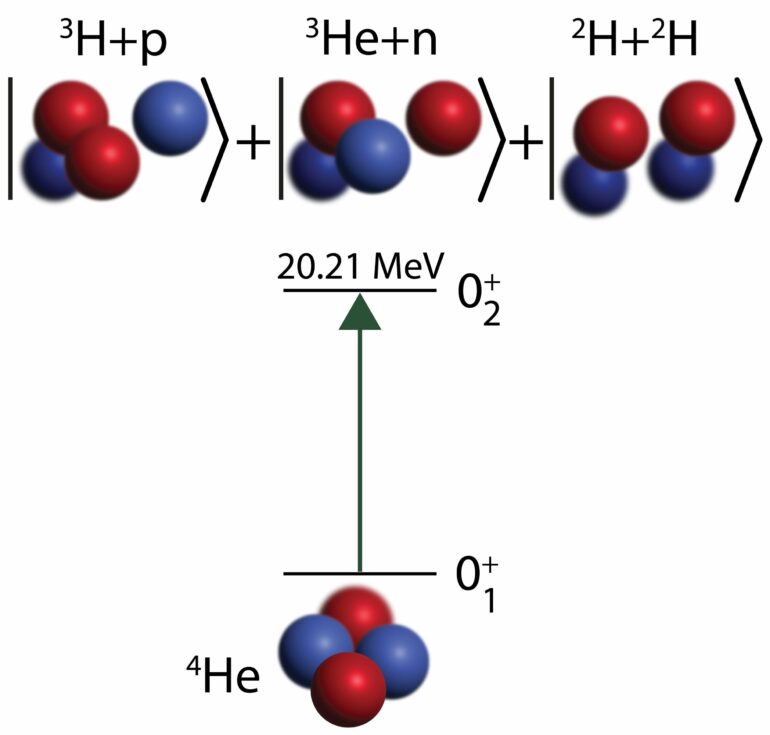The α particle, also known as helium-4, consists of two protons and two neutrons. Although it is one of the most extensively studied atomic nuclei, the precise nature of its excited states remains unclear.
A recent experimental study about the first excited state of helium-4, which is labeled 0+2 by scientists, has raised a new debate due to a large discrepancy between experiment data and theoretical predictions.
To better understand the nature of this state, Prof. Nicolas Michel from the Institute of Modern Physics (IMP) of the Chinese Academy of Sciences (CAS) and his collaborators have employed the no-core Gamow shell model to study the structure of the resonance 0+2 state of helium-4. The research was published in Physical Review Letters and highlighted as a “Featured in Physics” article.
The 0+2 state of helium-4 is only unbound by about 410 keV. It is a one-proton emitter, but has a very short life-time. The 0+2 resonance has traditionally been viewed either as a breathing mode or as a particle-hole excitation of its helium-4 ground state.
Michel and his collaborators have provided new descriptions for the 0+2 state of helium-4. They predicted a rather complex structure for the 0+2 resonance exhibiting a strong continuum coupling between the various decay channels.
It was found that the continuum coupling strongly impacts the nature of this proton-emitting state, and the best agreement with experimental data for the monopole form factor at the experimental energy was obtained.
The researchers suggested that the 0+2 state should not be seen as a breathing oscillation or a particle-hole excitation, but on the contrary as a threshold-aligned broad resonance.
More information:
N. Michel et al, Description of the Proton-Decaying 0+2 Resonance of the α Particle, Physical Review Letters (2023). DOI: 10.1103/PhysRevLett.131.242502
Provided by
Chinese Academy of Sciences
Citation:
Researchers apply no-core Gamow shell model to investigate first excited state of α particle (2024, January 31)



